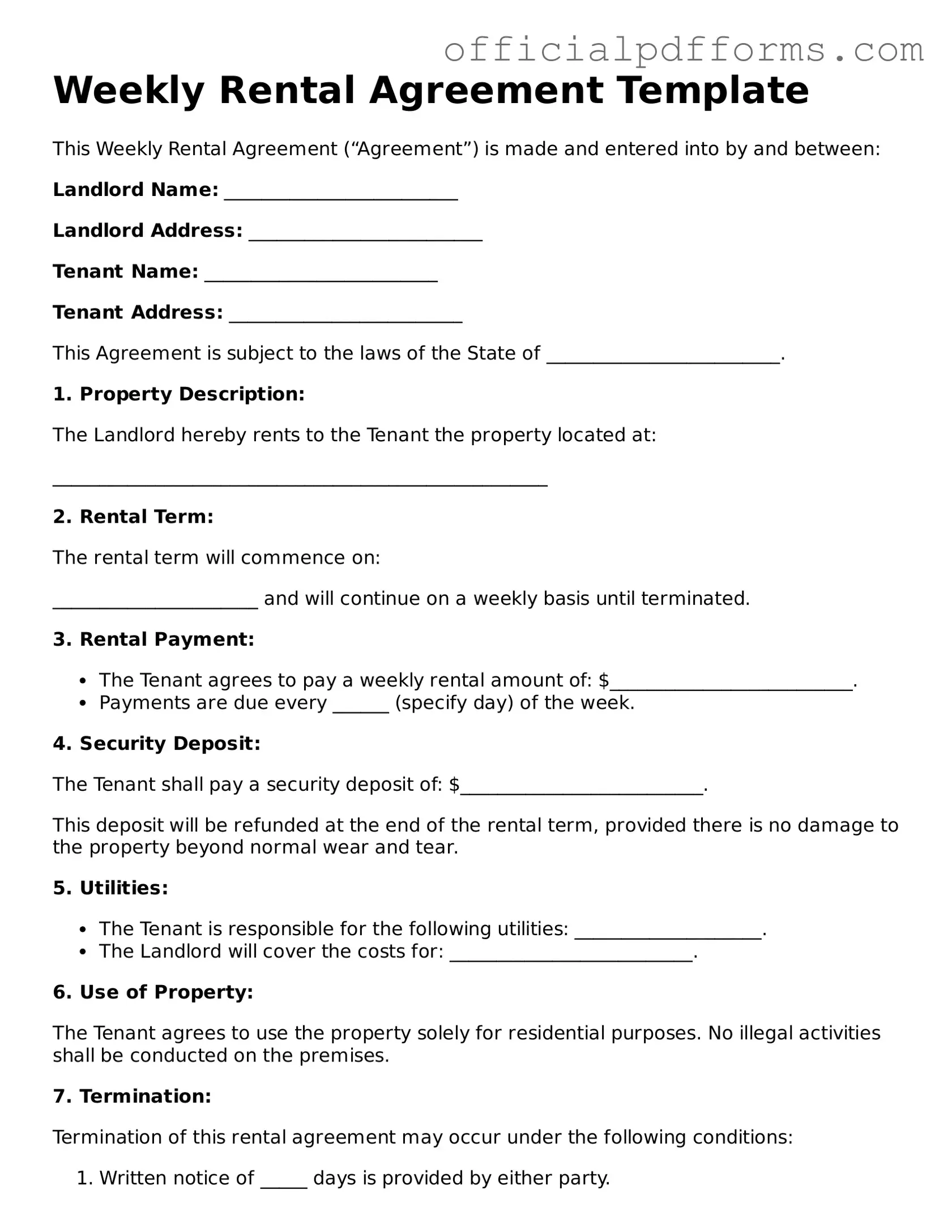What is a Weekly Rental Agreement?
A Weekly Rental Agreement is a legal document that outlines the terms and conditions for renting a property on a weekly basis. It specifies the responsibilities of both the landlord and the tenant, including payment terms, duration of the rental, and rules for property use. This type of agreement is commonly used for short-term rentals, such as vacation homes or temporary housing.
A Weekly Rental Agreement generally includes the following information:
-
Names and contact information of both the landlord and tenant.
-
Property address and description.
-
Rental rate and payment schedule.
-
Duration of the rental period.
-
Security deposit requirements.
-
Rules regarding property use and maintenance responsibilities.
-
Termination conditions and procedures.
How do I fill out a Weekly Rental Agreement?
To fill out a Weekly Rental Agreement, follow these steps:
-
Enter the names and contact details of both parties.
-
Provide the address of the rental property.
-
Specify the rental rate and payment schedule.
-
Indicate the start and end dates of the rental period.
-
Outline any security deposit requirements.
-
Include any specific rules or conditions that apply to the rental.
-
Both parties should sign and date the agreement to make it legally binding.
What are the benefits of using a Weekly Rental Agreement?
Using a Weekly Rental Agreement offers several benefits:
-
Clarity: It clearly outlines the expectations and responsibilities of both parties.
-
Protection: It provides legal protection in case of disputes.
-
Flexibility: It allows for short-term rentals, catering to transient needs.
-
Record-keeping: It serves as a formal record of the rental arrangement.
Can a Weekly Rental Agreement be modified after it is signed?
Yes, a Weekly Rental Agreement can be modified after it is signed, but both parties must agree to the changes. It is advisable to document any modifications in writing and have both parties sign the revised agreement. This helps ensure that all parties are aware of and consent to the changes.
What happens if a tenant violates the terms of the Weekly Rental Agreement?
If a tenant violates the terms of the Weekly Rental Agreement, the landlord has several options. Depending on the severity of the violation, the landlord may issue a warning, demand corrective action, or begin eviction proceedings. The specific steps taken will depend on the nature of the violation and the terms outlined in the agreement.
Is a Weekly Rental Agreement legally binding?
Yes, a Weekly Rental Agreement is legally binding as long as it meets certain criteria. Both parties must willingly agree to the terms, and the agreement must not contain illegal provisions. It is recommended that both parties keep a copy of the signed agreement for their records.
